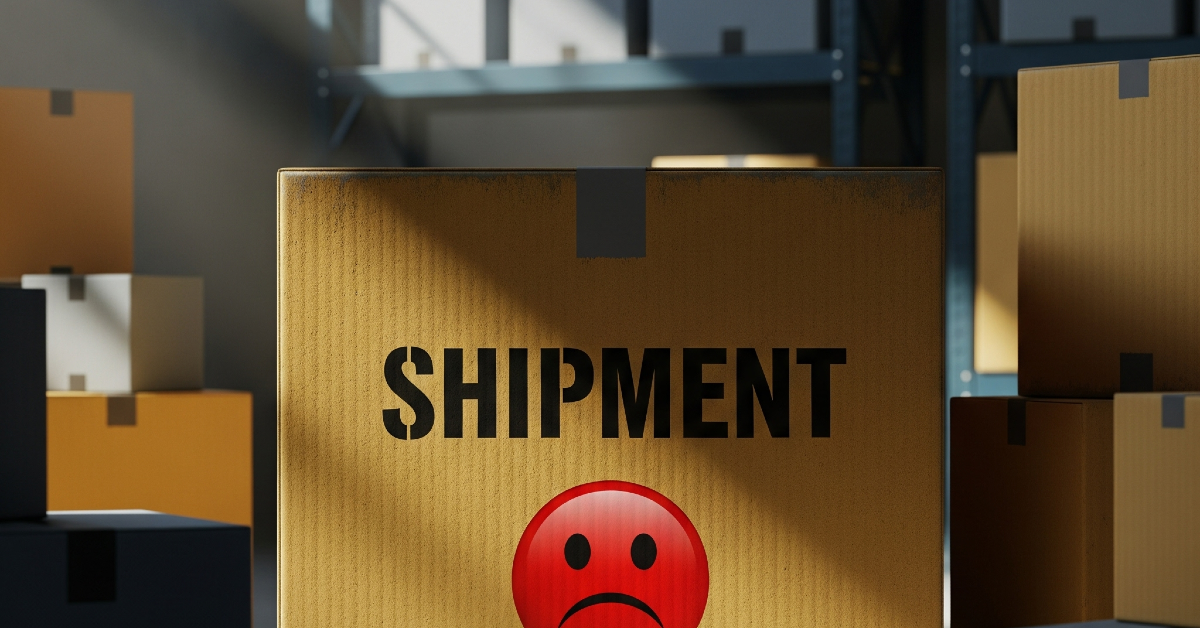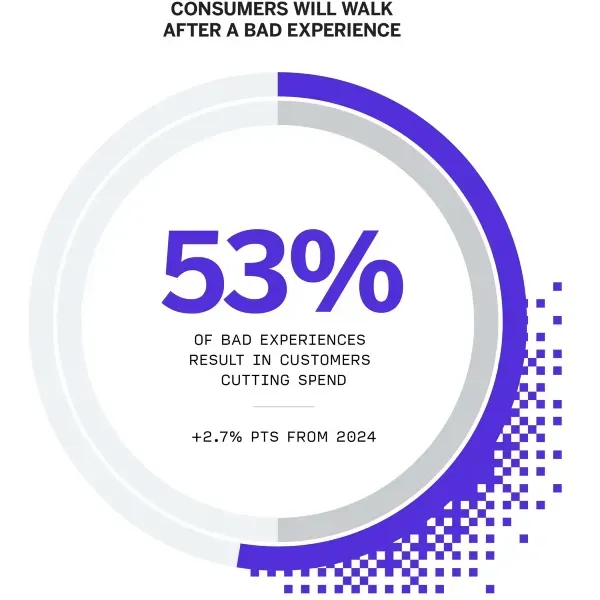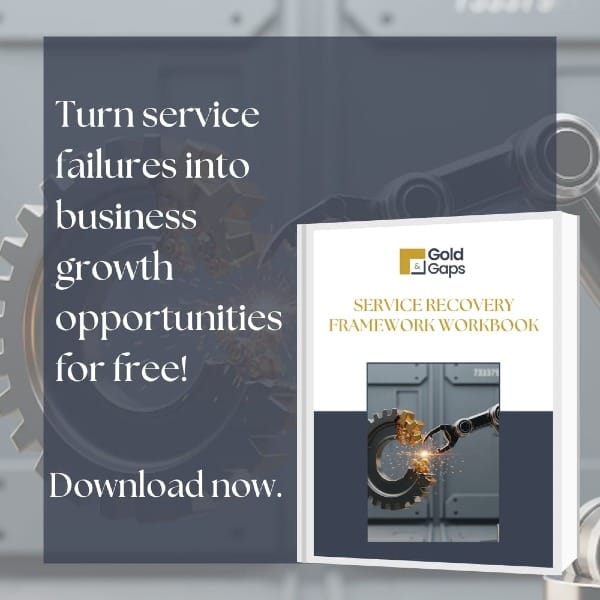Shipment 33: A CX Case Study of Service Failure Mismanagement

I had used Heroshe, a prominent cross-border logistics company, 32 times, and not once did I need to follow up. I would place an order on my favourite online stores, send it to their US warehouse in Houston, Texas, pay for shipping, and wait. In about two or three weeks, the item would be in Lagos – sometimes delivered to my doorstep, other times picked up. It was that predictable. That seamless.
Then came shipment 33.
It was supposed to arrive just after the new year, given their usual holiday schedule. The shipment included tech items—headphones, earbuds, and three pairs of computer glasses. I paid for delivery to my house as usual. That was 10 December 2024.
It is now 13 August 2025, eight months later, and the package has vanished. Not with a bang, but with a slow, frustrating fade into a void of unanswered emails and generic updates.
This is not a callout. It is a CX case study on service failure, expectation mismanagement, and how companies lose trust, not necessarily when they make mistakes, but when they respond to those mistakes poorly.
More Than Just a Logistics Company…
Before now, Heroshe had earned a reputation for consistency. The promise of this cross-border e-commerce and logistics company focused on connecting African businesses and individuals with global markets, particularly the US, UK, and China, was clear: 7 to 14 working days from warehouse to delivery, barring customs delays, and they delivered.
Just over a year ago, on July 23, 2024, when a Reddit user asked if Heroshe was really good, one user replied: “Heroshe is really good. I’ve used them for 2 years now and been able to send stuff to Lagos, Abuja and PH. I don’t trust anyone else.”
Another wrote: “Yeah heroshe is really good, I used them to deliver a product from Amazon to Nigeria, it was cost efficient and fast, plus their customer support is the best”.
Heroshe was more than a logistics company. They served as a bridge to global commerce, especially for small business owners and freelancers looking to bring goods into Nigeria and Ghana at a reasonable cost. They solved a real problem and earned the trust of their customers.
But something happened between then and now that turned that trust into frustration for their customers, and how they handled it is what makes this case important.
The Six Pillars of Failure: A CX Breakdown
If you read the Chairs Medic article, you will know about KPMG’s Six Pillars of Customer Experience Excellence – Integrity, Resolution, Expectations, Time and Effort, Personalisation, and Empathy. Believe it or not, all these pillars matter when running a business, regardless of the scale or the industry.
People are often willing to forgive a delay, a broken product, or even a missed delivery if the company takes responsibility for the issue and handles it with honesty, speed, and care. But when service failure is followed by silence, deflection, or vague messaging, it turns operational issues into existential ones.

Here is how the failure at Heroshe unfolded across six CX pillars:
Integrity
Heroshe was not honest about their operational challenges. They initially attributed delays to limited cargo flights during the festive season and their holiday schedules. Reasonable, right? Given that I knew from experience to expect longer timelines for December orders.
But this wasn’t about the holidays. Months later, they admitted via a general email that they had underestimated the size of their operational challenges. A failed transition to a new warehouse in Delaware and poor onboarding led to internal backlogs that disrupted operations well before the public knew.
After paying for shipping and delivery to my house as usual, I was later asked to pay a clearance fee, months after the fact. Heroshe had previously promised no hidden charges. Yet, this felt like one.
“...they now collect clearing fee. Which they don't do before. 20 minutes ago, I just paid the clearing fee per item...” – Reddit user
Resolution
No refund, compensation, or clear alternative. When I offered to have someone pick up the package from the US, they said it was not possible. A few months later, they opened up that same option to other customers, and at this time, my shipment was no longer eligible.
Even now, I have no real idea where the package is. I’ve received multiple general updates regarding shipment of pallets and the clearing of backlogs, but never about my specific package.
“The worst thing is I've been sending them mails to get a rough estimate of when my things will be delivered... But they can't even give an estimate. Common estimate.” – Reddit user
The failure to offer clear pathways to resolution or even acknowledgement remains one of the most damaging aspects of this experience.
Expectations
Heroshe was built on one key expectation: delivery in two to three weeks. This shipment is now nearly eight months late. Support channels were shut down. The company disabled their live chat and support email and has opened two Gmail accounts. Their Instagram hasn’t been updated since January. Their homepage carries a notice about halting shipments, but even that came late.
Their repeated email line: “We are diligently working to resolve these issues. Shipments are scheduled to depart soon” (paraphrased) did nothing to help customers manage expectations. It only deepened the frustration.
Empathy
At no point did Heroshe’s communication feel truly empathetic. Messages were templated. Updates were vague. The phrase “please rest assured” appeared too many times and meant nothing. What I needed was someone to say, “This is where your shipment is. This is what went wrong. Here are your options.”
For me, it’s an unfulfilled delivery of a shipment worth over half a million naira. For others, it’s millions worth of debt, and some jail time too.
“Just yesterday, one of us was locked up in a police cell for their inability to deliver a customer’s good that had been paid for”, said a user who recounted his experience to the Foundation of Investigative Journalism.
Empathy is not optional when a service failure has occurred. Especially not when people’s businesses and lives are at stake.
Personalisation
Every message I received felt generic. At no point did Heroshe address my specific situation or acknowledge my long-standing customer history. For someone with 32 successful shipments, there was no tailored response, no escalation, no estimated delivery date, only repeated “unfortunately we are unable…” messages.
Time and Effort
It has now been over eight months. In that time, I’ve had to reach out repeatedly, through their website and emails, chasing updates that never came. The emotional and cognitive toll of following up without answers is part of the service cost. And in this case, that cost has been entirely mine to bear.
The Real Cost: One Shipment Undid 32
This is the part most businesses fail to grasp. It doesn't matter how many good experiences a customer has had with you. All it takes is one unresolved failure to undo everything. And when that failure is paired with silence, the relationship and the business collapse. According to Qualtrics research, customers are indeed highly likely to leave a business after a negative experience, and 53% of bad experiences result in customers cutting their spending with a brand. This demonstrates a significant risk for businesses: in 2024, an estimated $3.7 trillion in global sales were at risk due to bad customer experiences.

What Heroshe Could Have Done – And What You Should Do
Service failure is not unique to Heroshe; mistakes happen, and sometimes, they’re “beyond control”. The real question is: what do you do next? This is where service recovery – the process of turning an unhappy customer into a satisfied one comes in. Here is a simple service recovery framework for every business, from solo entrepreneurs to large enterprises.
- Communicate early and clearly – Do not let customers discover a failure through silence.
- Offer options – Refunds, pick-up alternatives, vouchers. Give customers control.
- Acknowledge the emotional cost – Speak to the real-world consequences of the failure.
- Restore faith incrementally – Provide specific, per-order updates with a named contact.
- Tailor responses – Recognise long-term customers and escalate urgent cases.
- Reduce customer effort – Make support accessible and proactive.
- Make redemption tangible – Refunds, credits, or partnerships to fulfil orders.
- Share a public post-mortem – Transparency rebuilds goodwill.
Even if full recovery is not possible in some cases, a company can still restore dignity by delivering truth and closure.
We’ve created the Gold & Gaps Service Recovery Framework Workbook– a practical, customisable tool to help you turn service failures into moments of trust-building. Download it free and adapt it to your business before the next crisis hits.
Final Thought: What You Owe Your Customers
If you run a business, you owe people more than just the product or service they paid for. You owe them clarity. You owe them closure.
If you can't deliver the service, deliver the truth. If you can't fix the delay, give the customer a resolution timeline. If you can’t give them certainty, at least give them honesty.
Even in failure, a brand can still be trusted – but only if it’s willing to speak, take responsibility, and care about how it's experienced. That’s the difference between a mistake and a meltdown.
And that’s the lesson of shipment 33.




